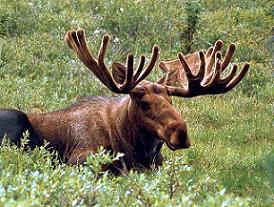
- Moose, elk and deer are particularly active in the fall, especially at dawn and dusk, as they search for mates and food. Deer and elk can often travel in groups of two or more, so when motorists see one animal there may be more nearby.
- Animals seen at the side of the road or in the roadside ditch can suddenly run onto the road, so be certain to slow down enough to allow you to avoid a collision.
- Drivers who see these animals along the road should slow down and sound their horns in a series of short bursts. At night, motorists should blink their headlights to warn the animals and give them a chance to move out of the way.
- Motorists should take extra care:
- where roads cross creeks or rivers
- in wooded corridors
- where field edges run at a right angle to the road
- where fences meet roads, and
- where wildlife crossing signs are posted
On average, there is a motor vehicle/wild animal collision every 38 minutes
- One out of every 17 motor vehicle collisions involves a wild animal
- Motor vehicle/wild animal collisions are increasing annually. In 2007, 13,954 collisions were reported. Many more go unreported
- 89 per cent occur on two-lane roads outside of urban areas
- 86 per cent occur in good weather
For more information, check out the Ministry of Transportation’s Watch for Wildlife tips for motorists in Ontario.


